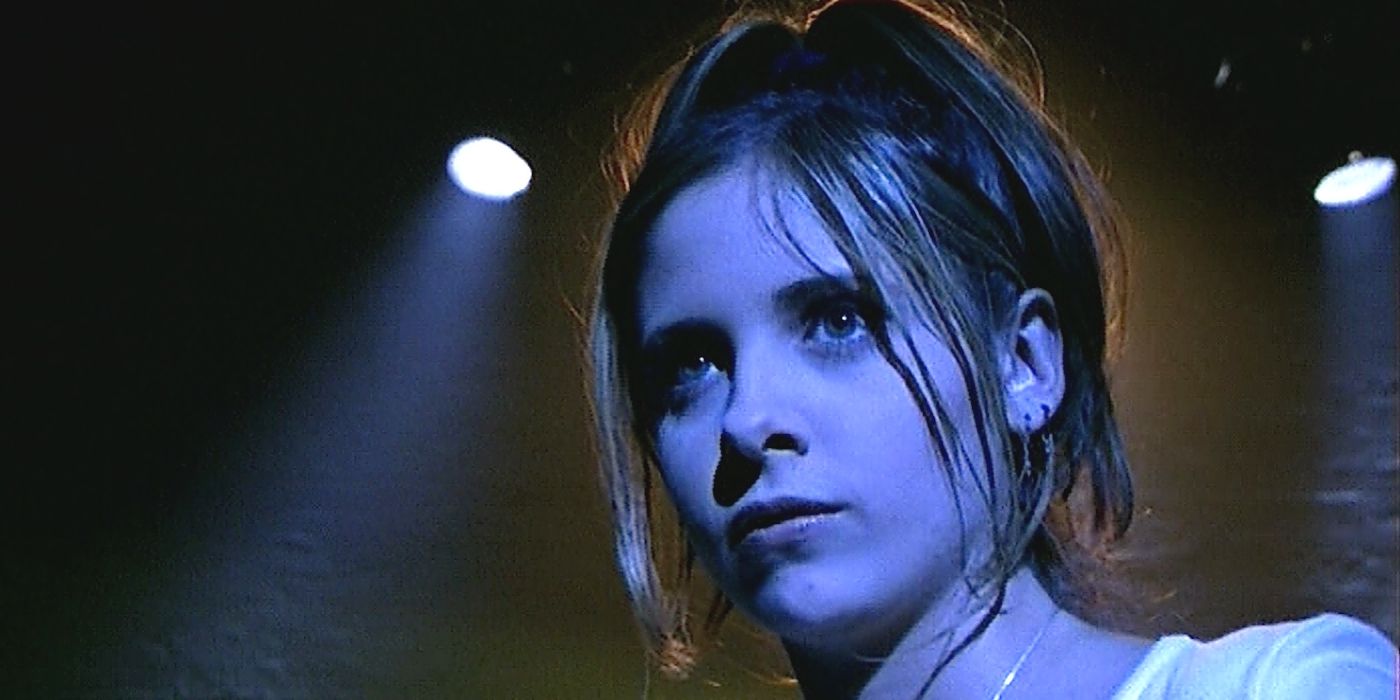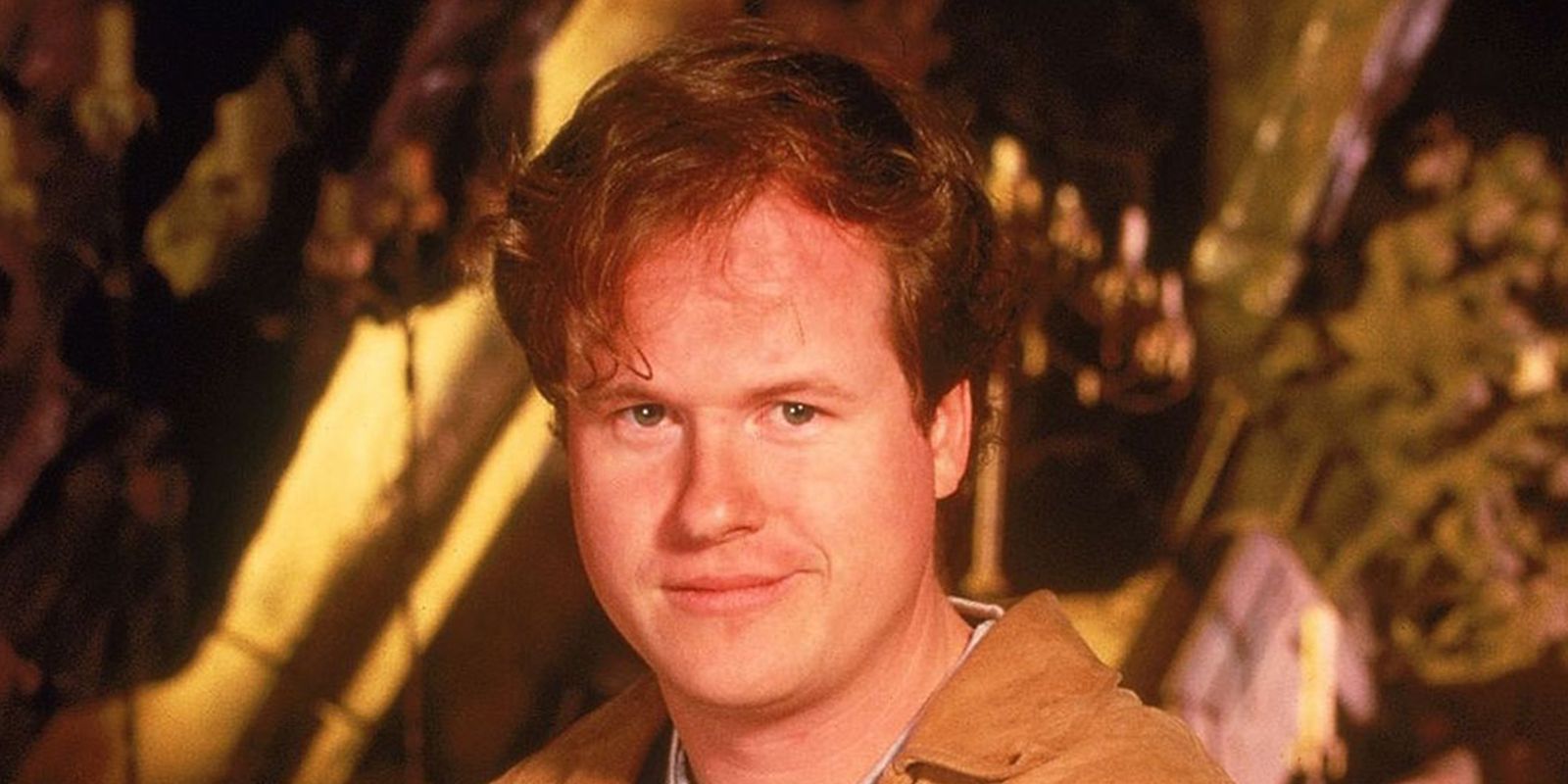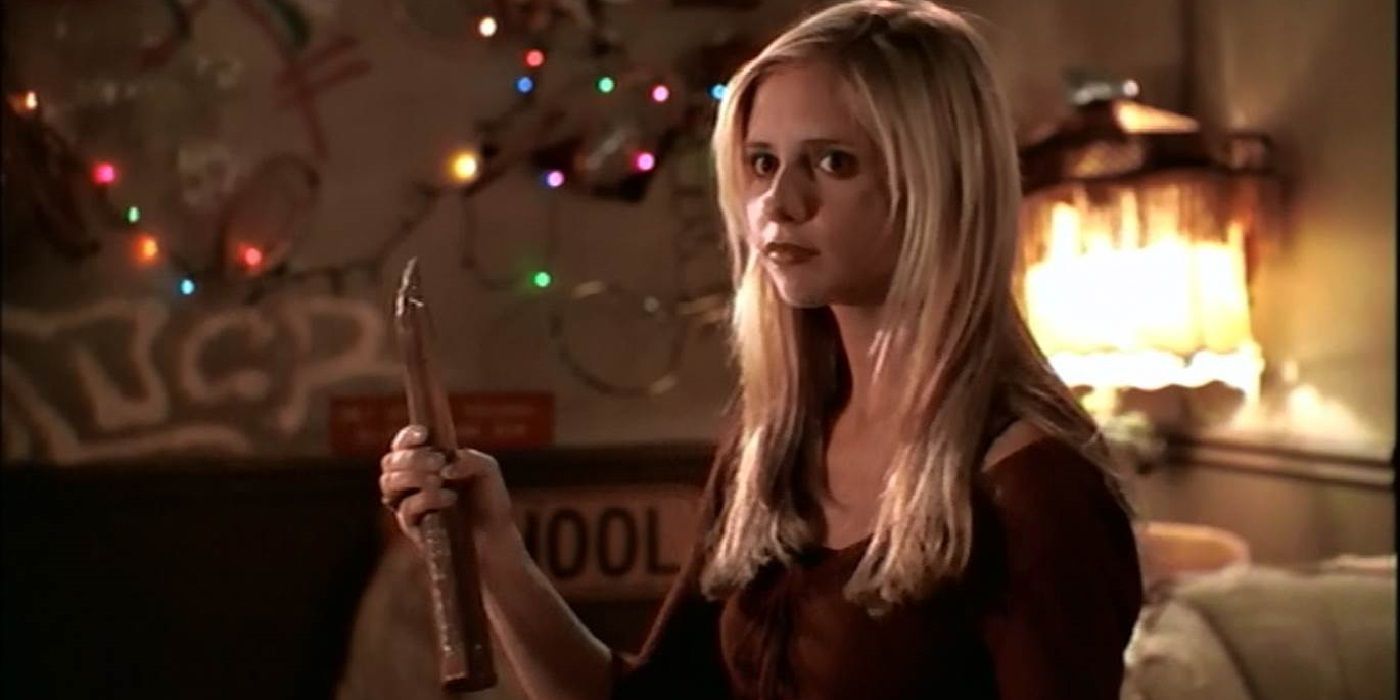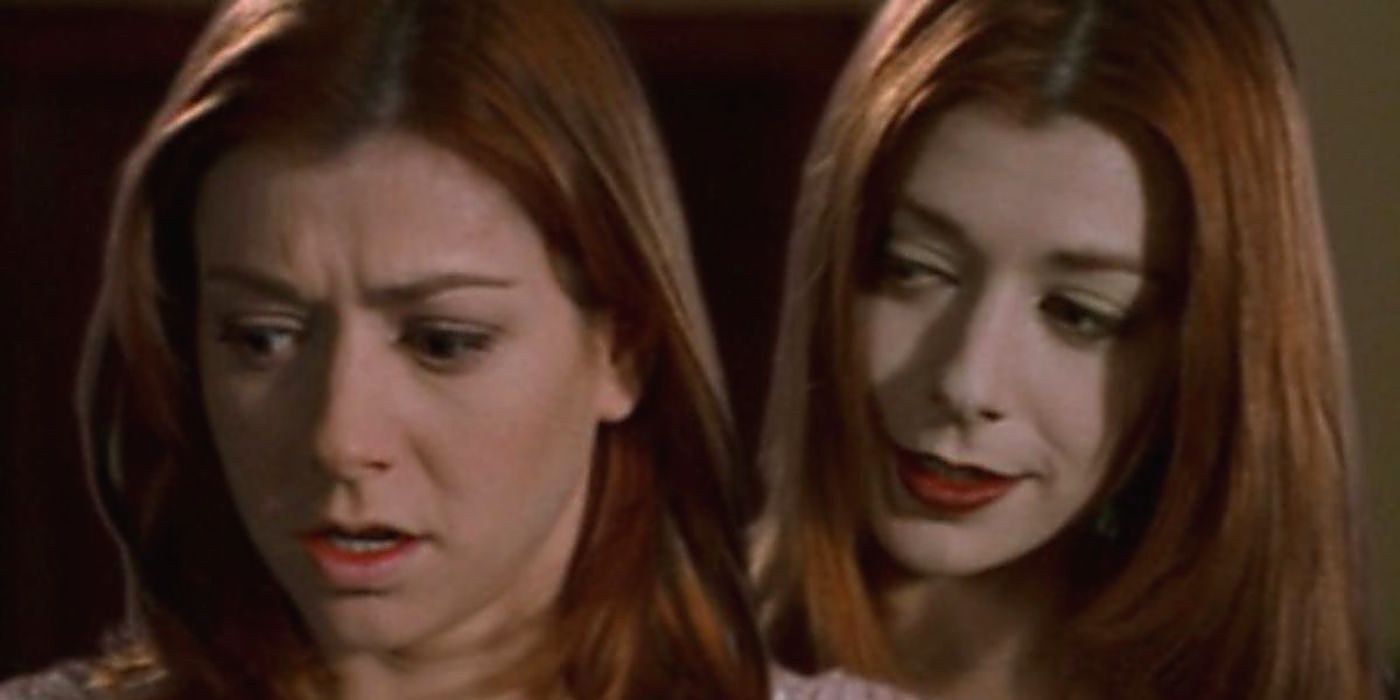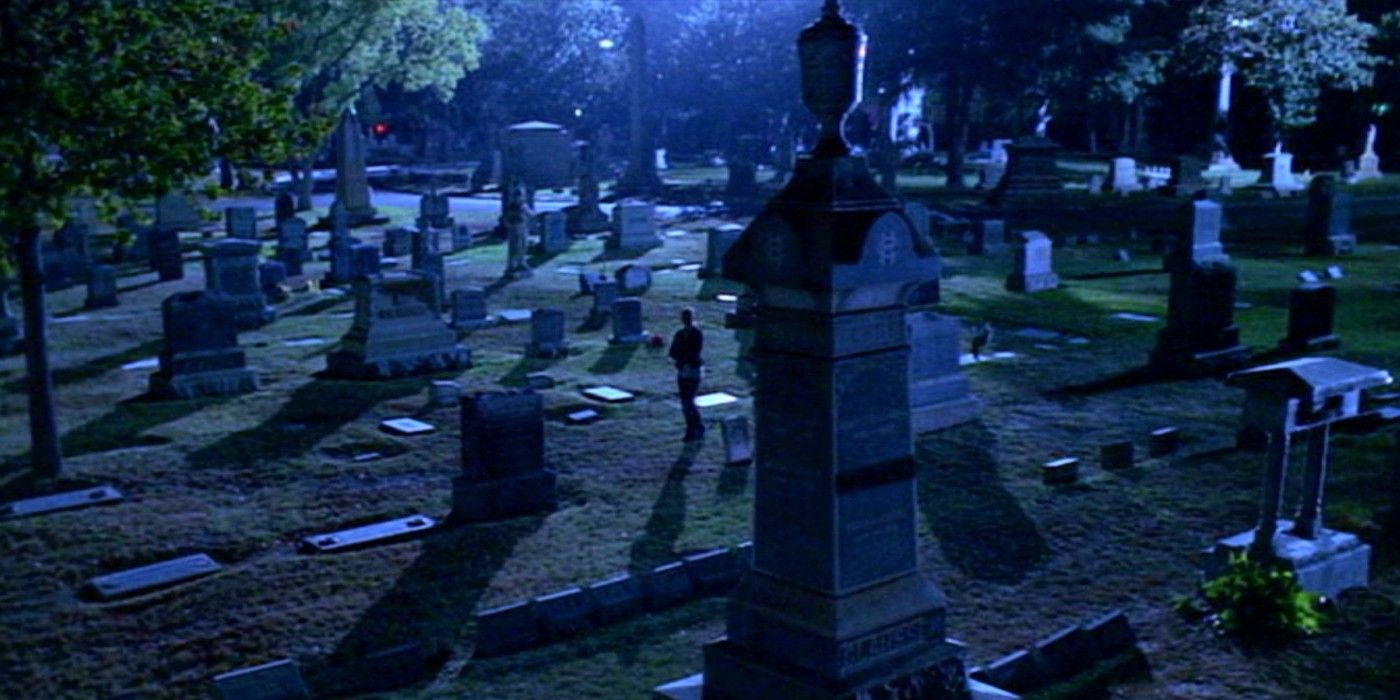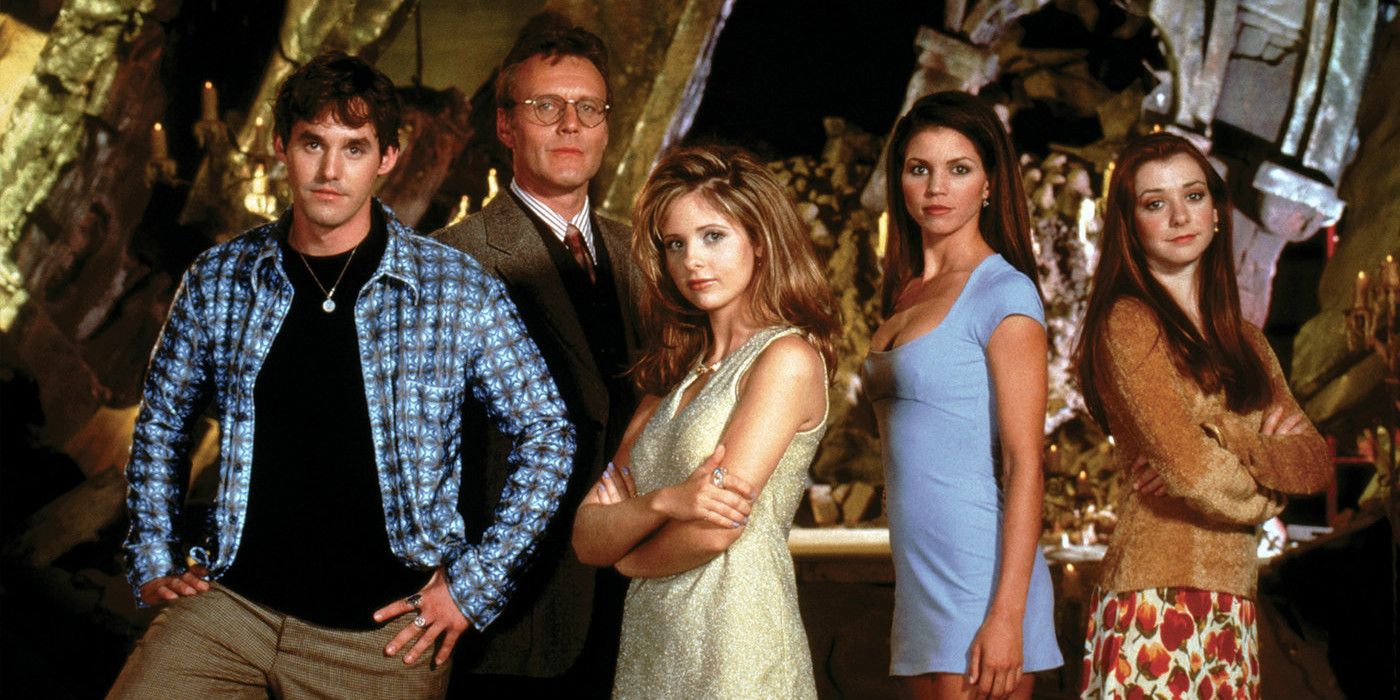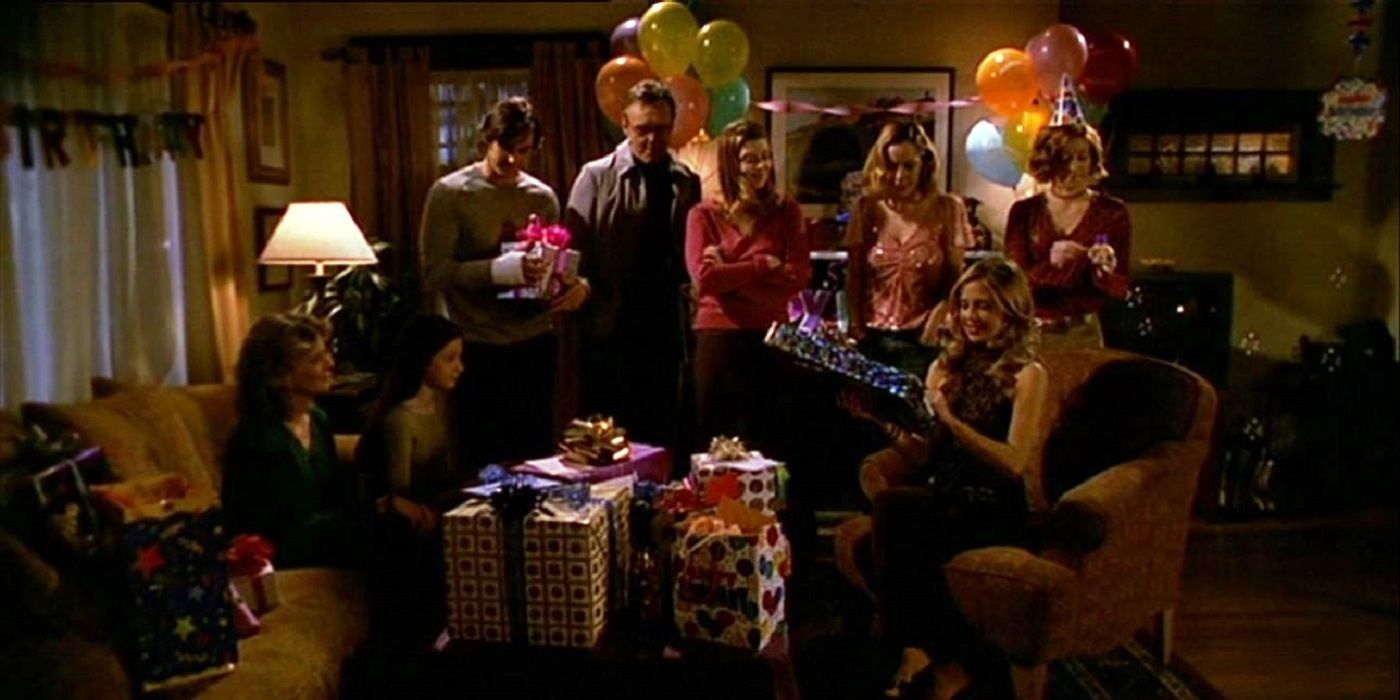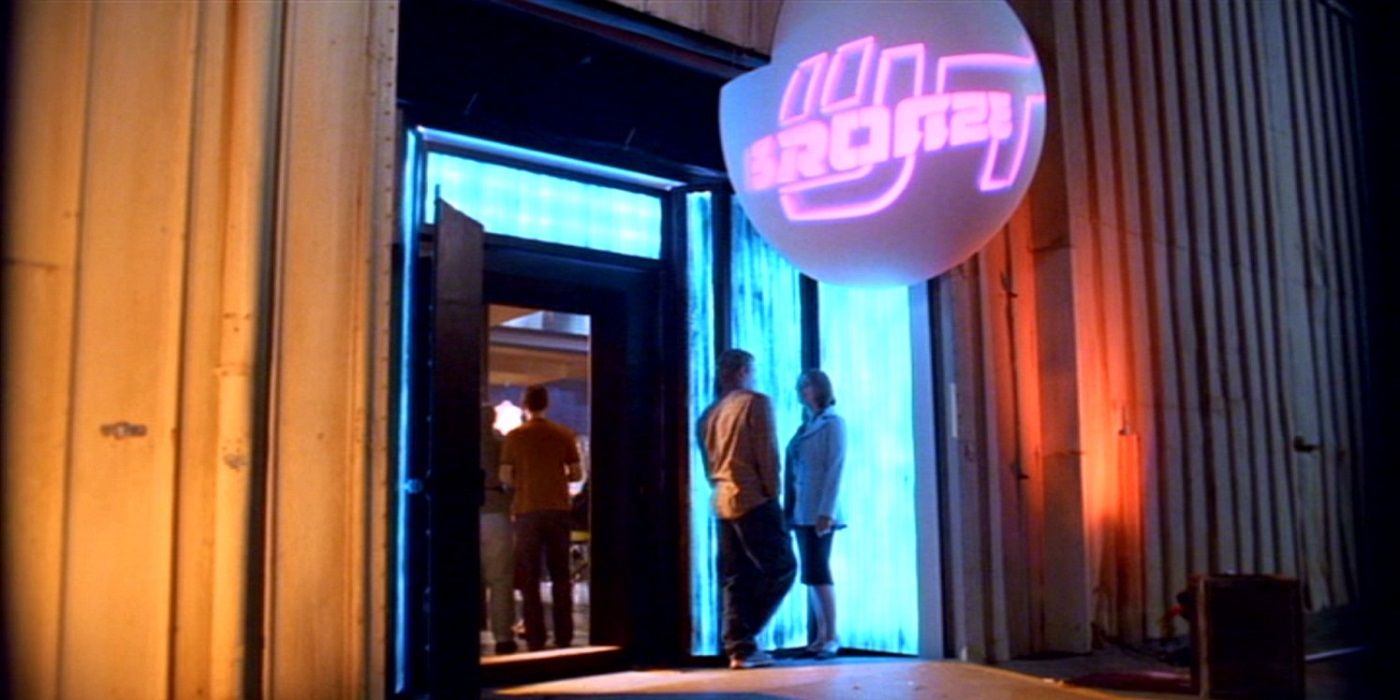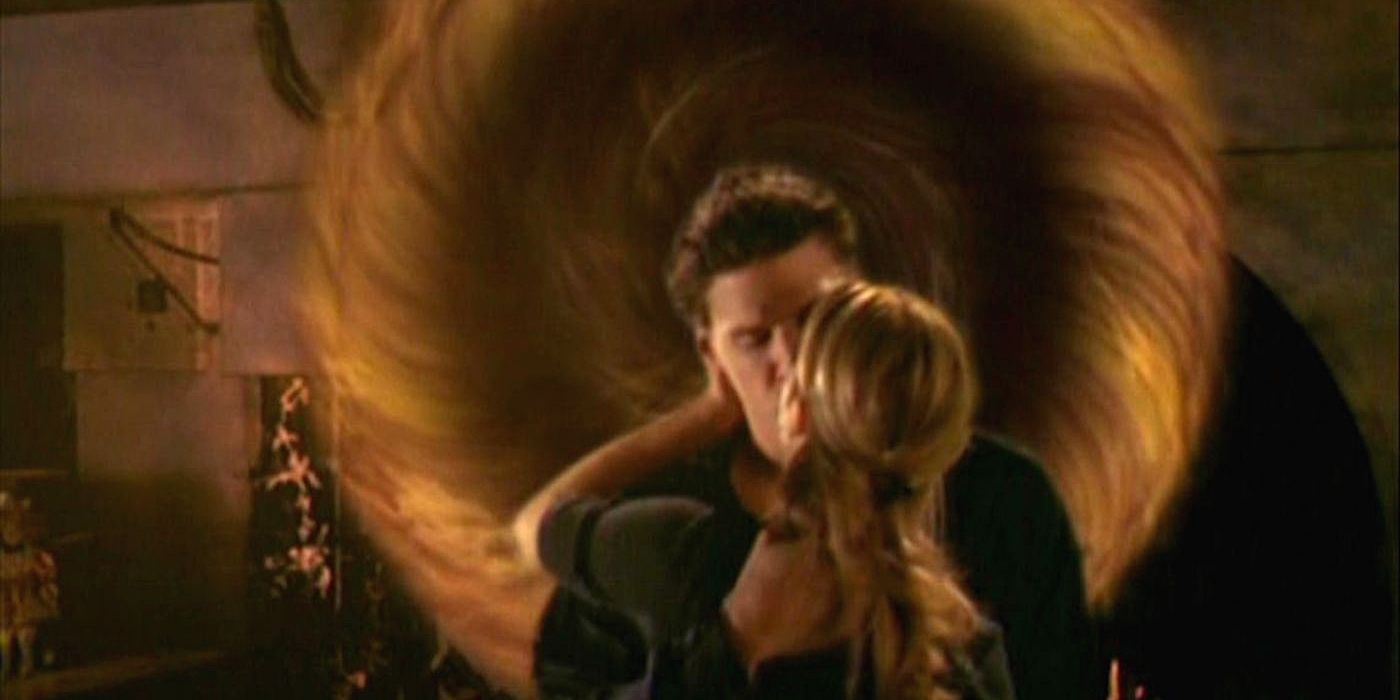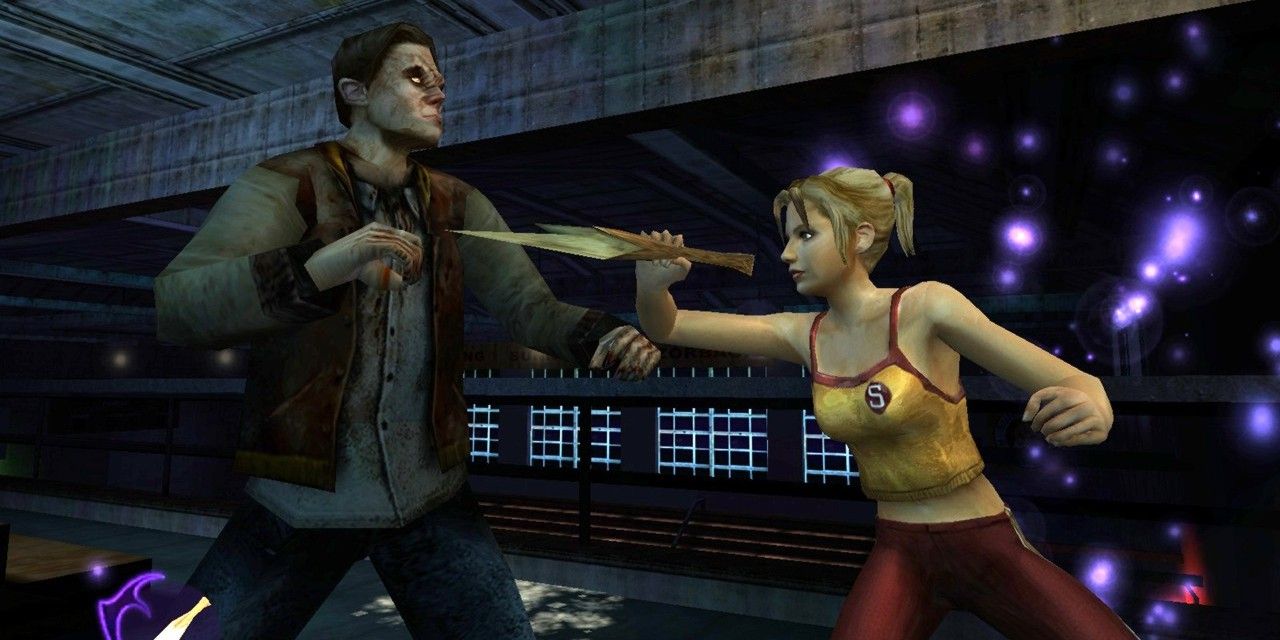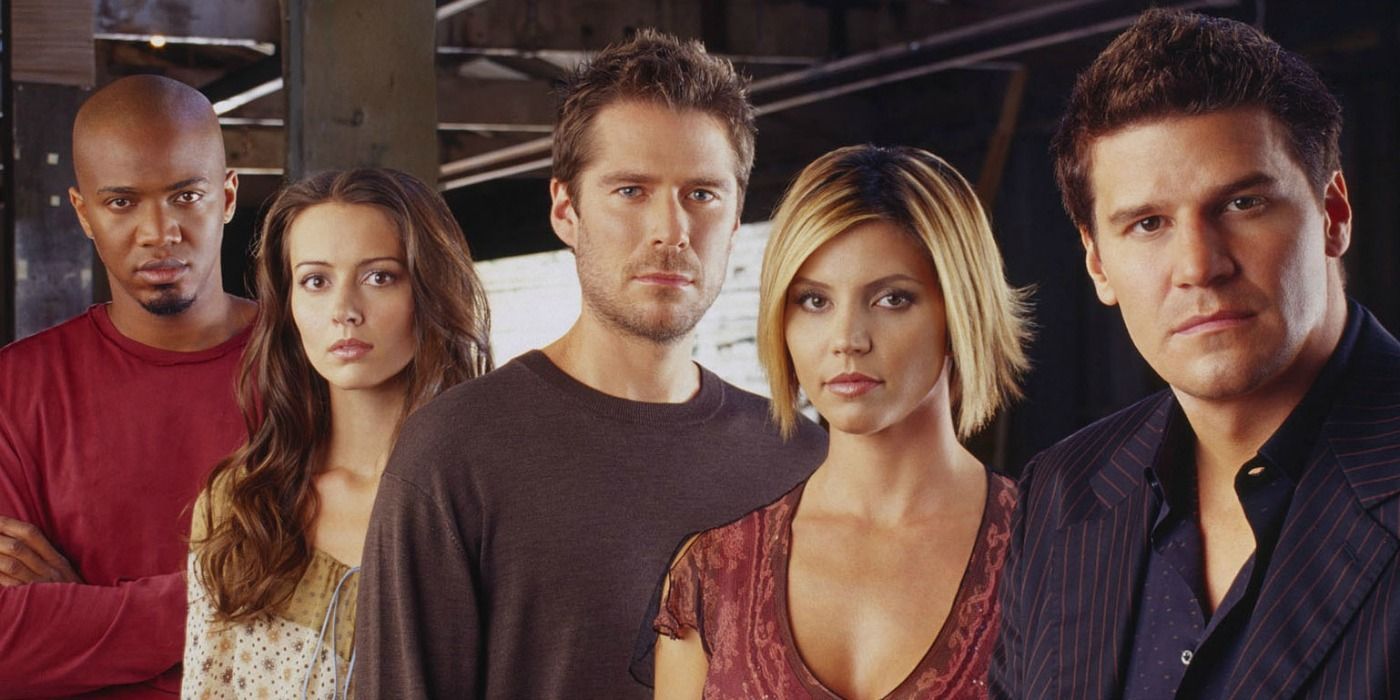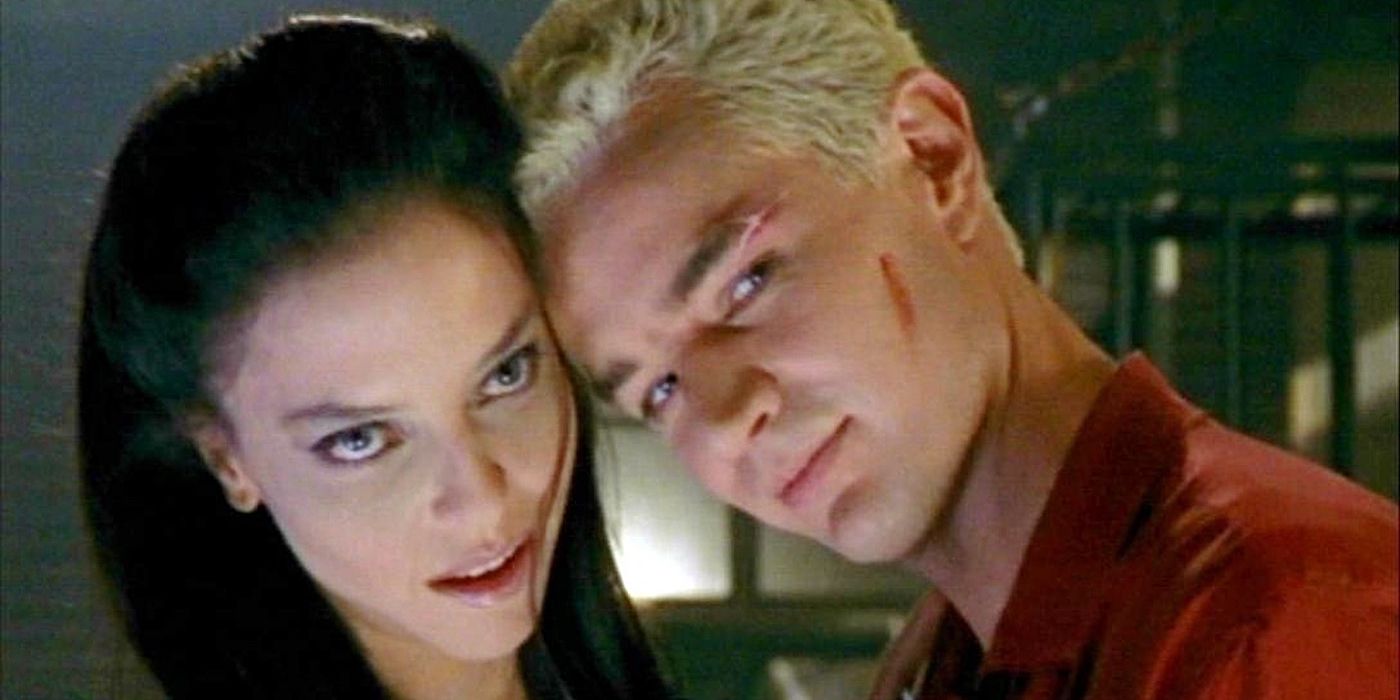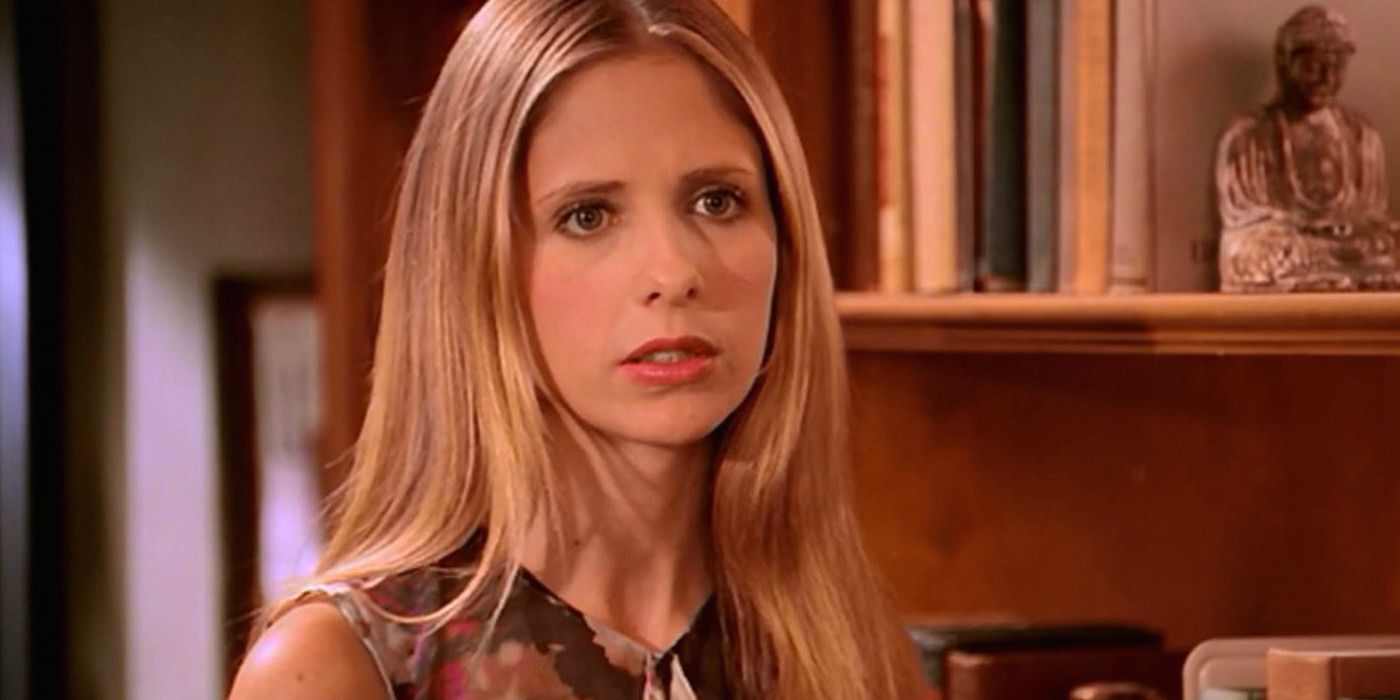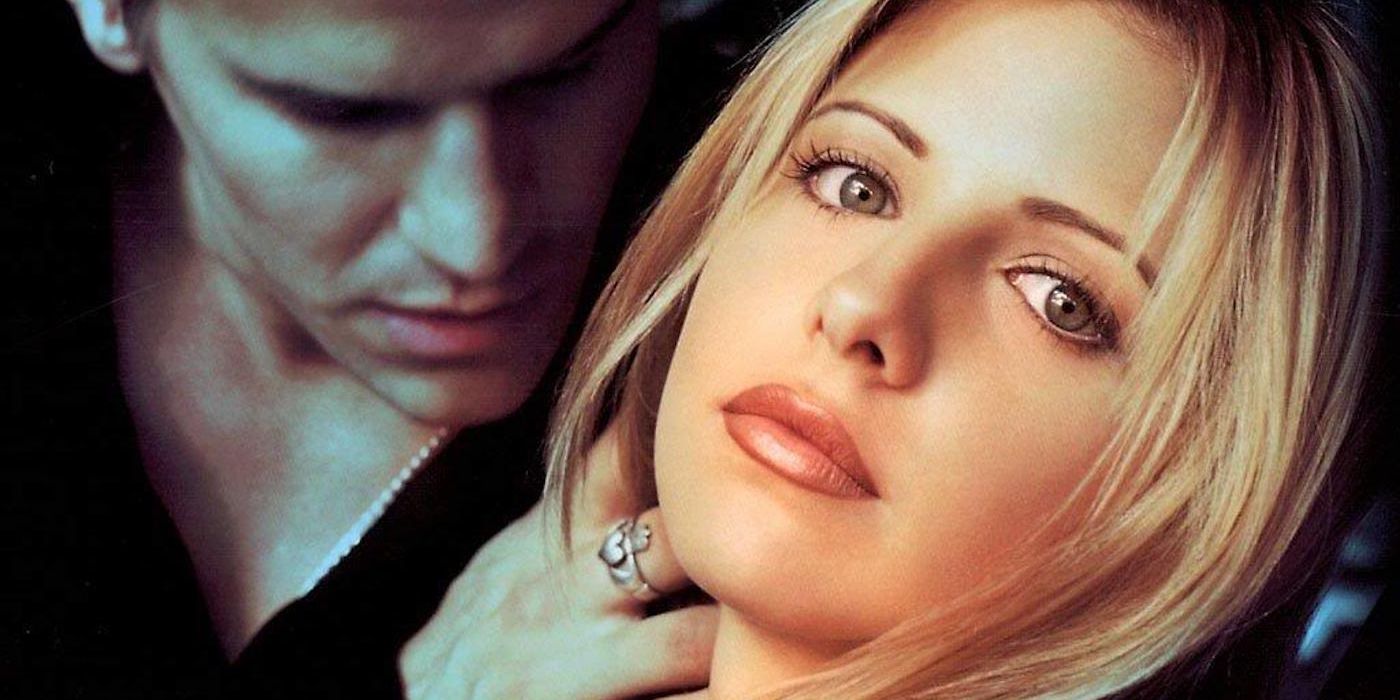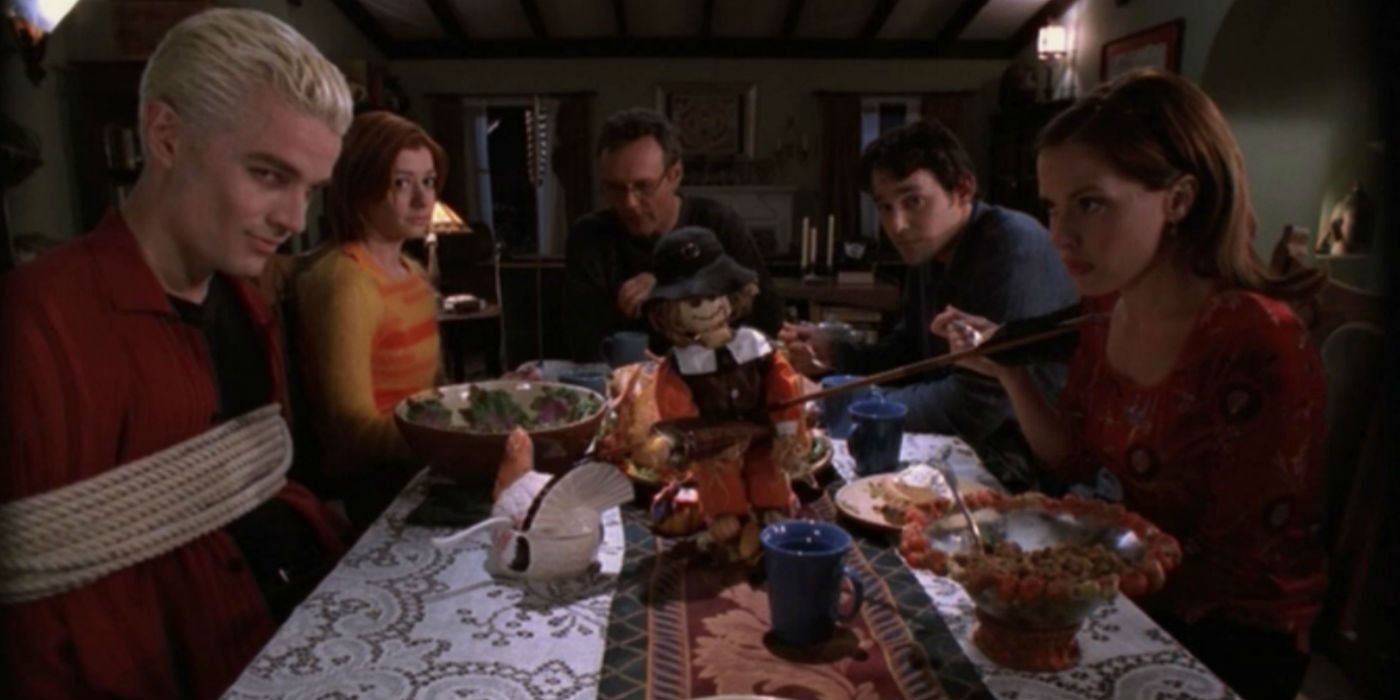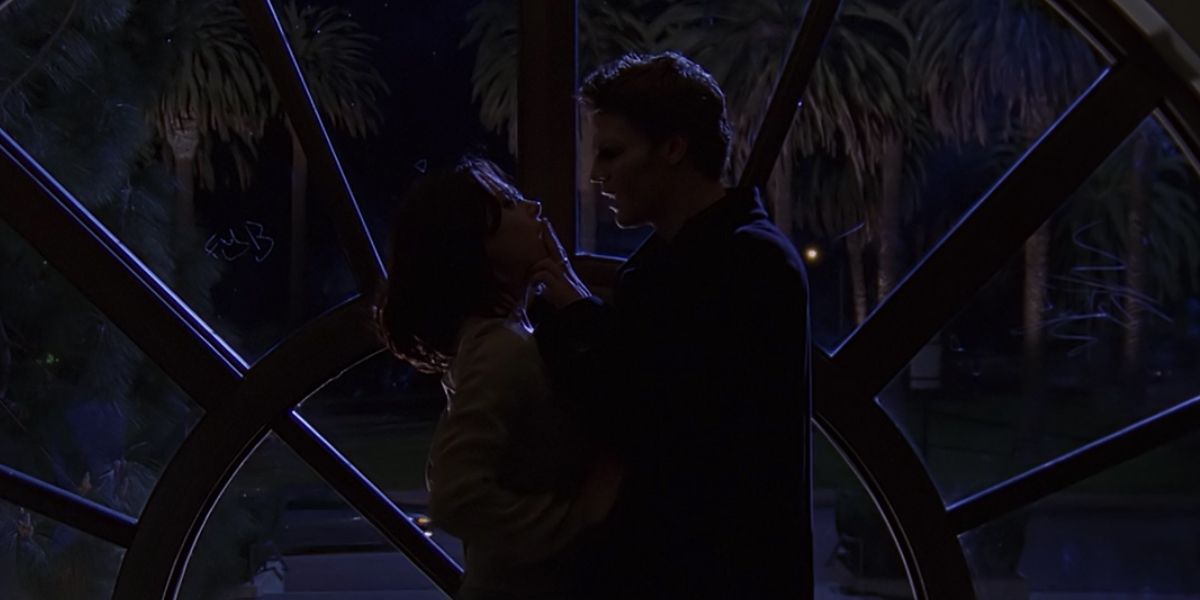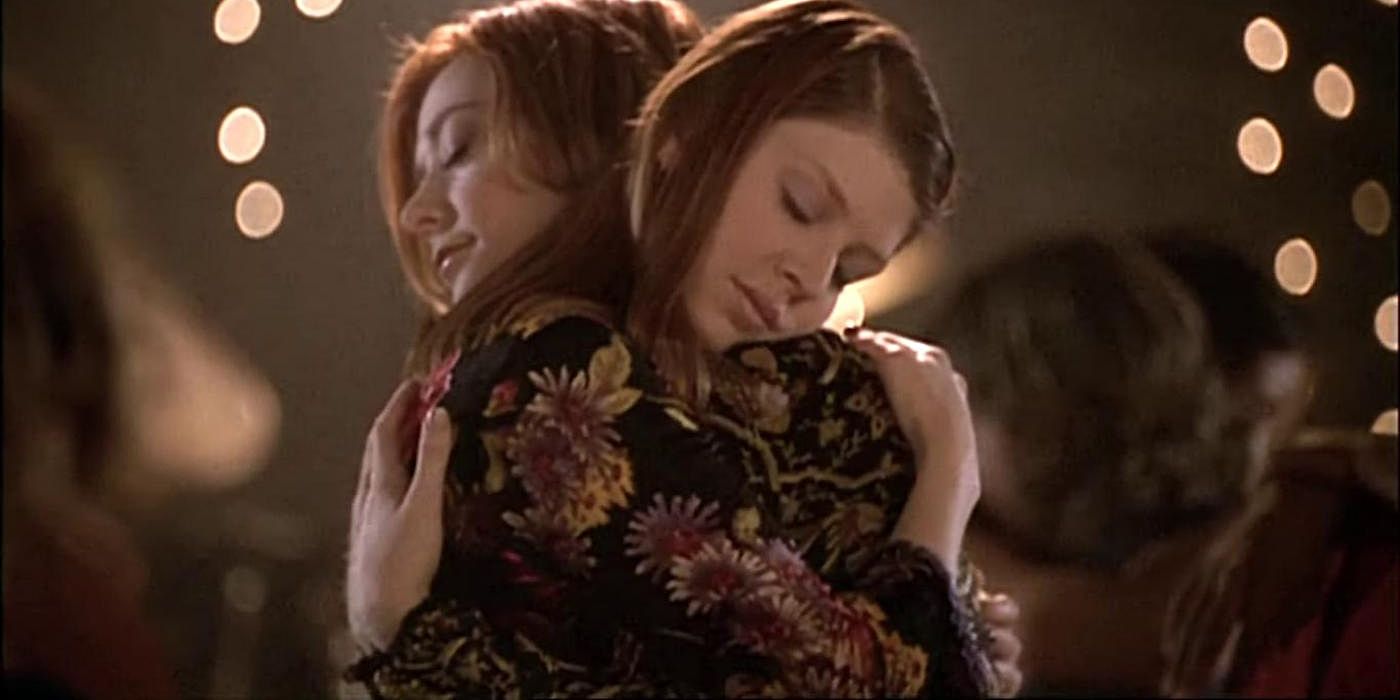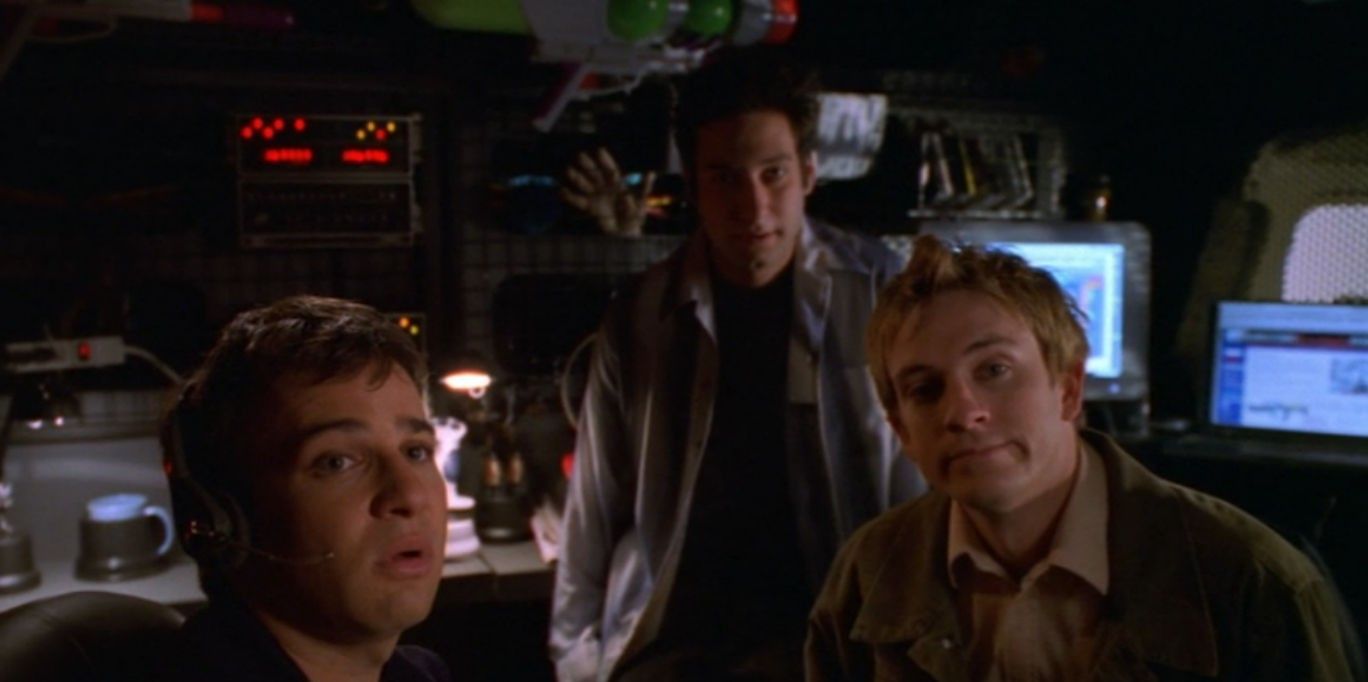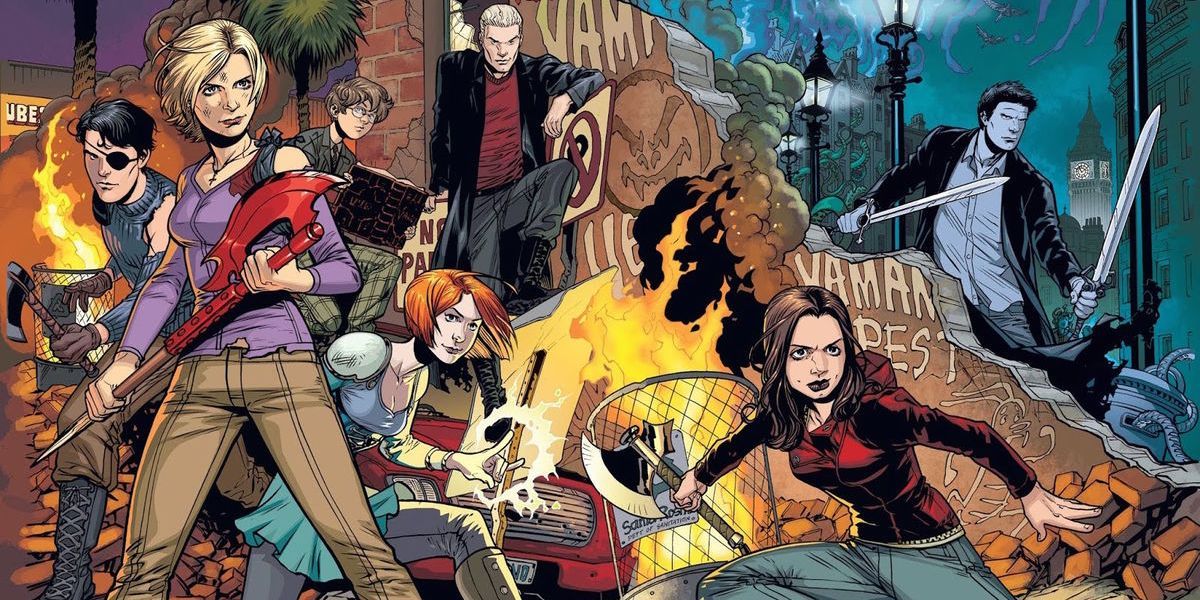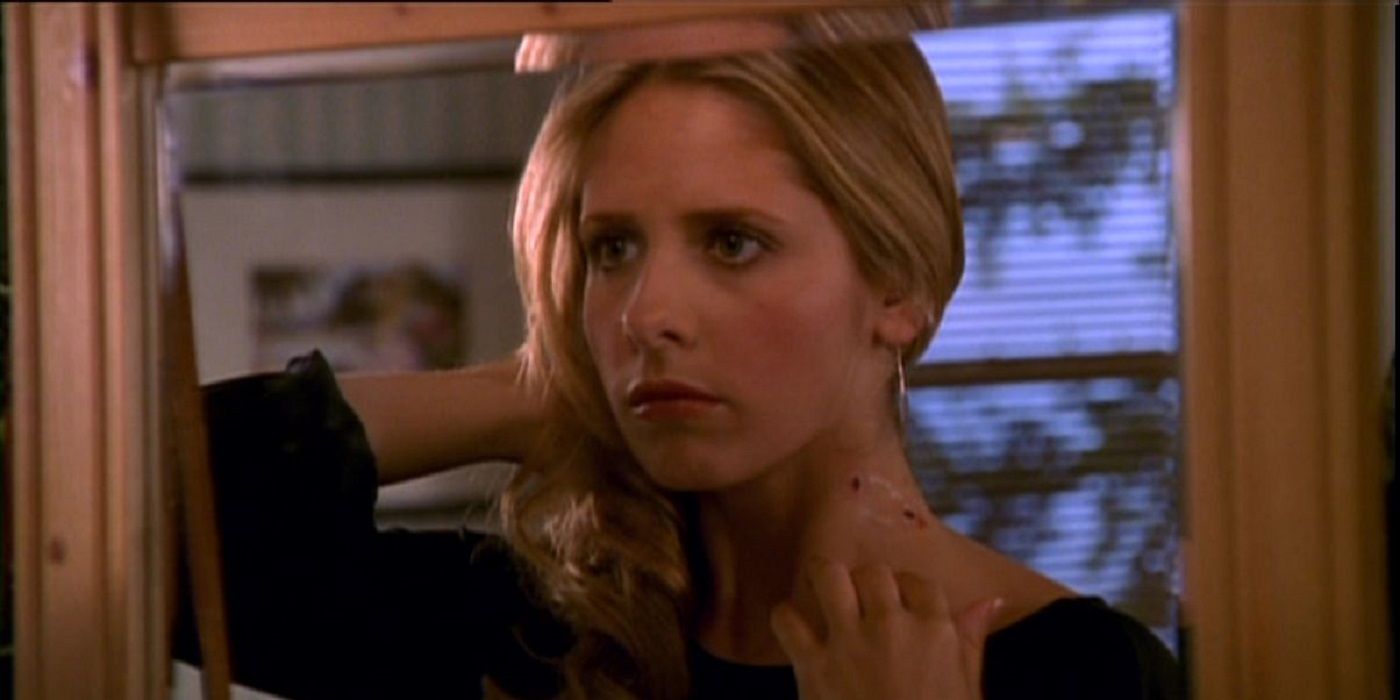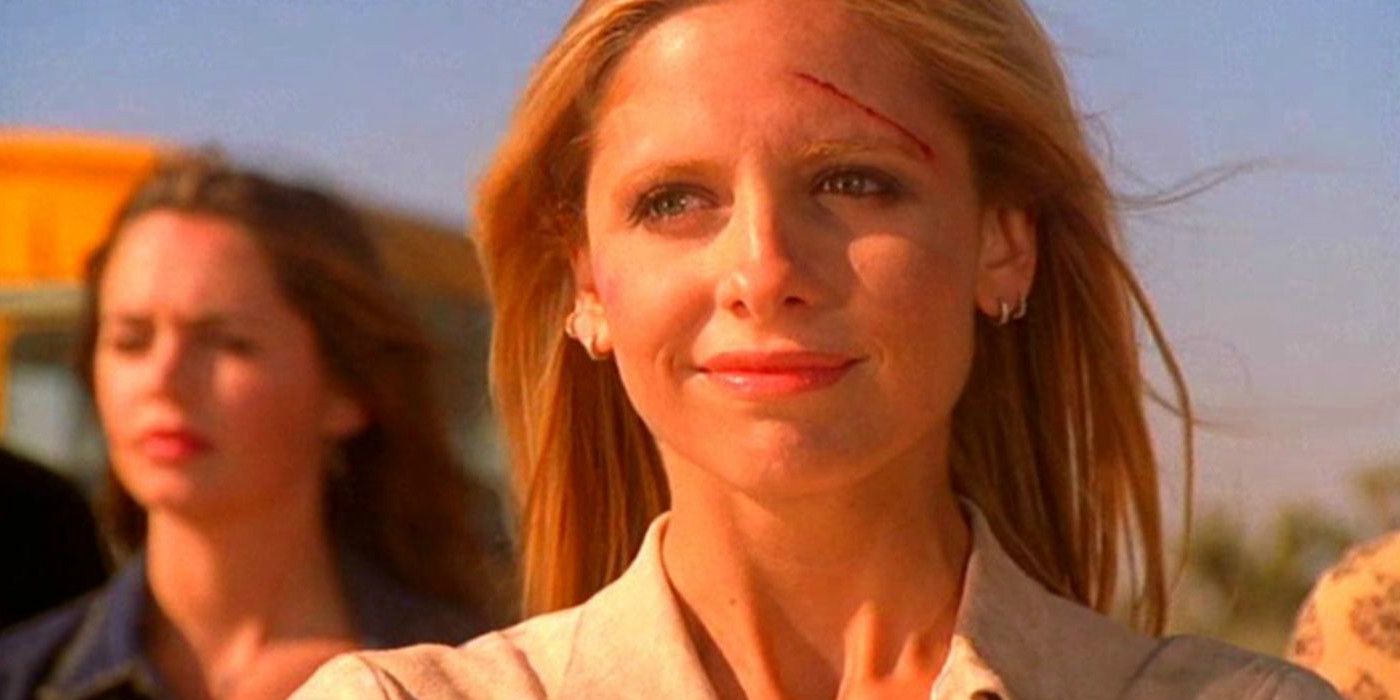March 10 marks the 20th anniversary of Buffy the Vampire Slayer. The celebrated series launched on what was then The WB (now The CW) as a mid-season replacement, beginning with a truncated 12-episode first season. The series was a surprise hit for its fledgling network, and remained popular for four more seasons on The WB and two on UPN.
But Buffy's legacy is not just seven seasons of quality television. The series aired the last of its 144 episodes in 2003, and even though 14 years have passed since then, the Slayer and her friends are still as popular as ever.
That kind of longevity is very rare in pop culture. Few entertainment properties hit the zeitgeist in just the right way to become beloved during their time and cherished long after. How did Buffy do it?
These are 20 Reasons Buffy Is Still Going Strong On Its 20th Anniversary.
20. The Talent
Joss Whedon is one of the biggest names in Hollywood now, thanks in large part to the massive success of the first two Avengers films, which he wrote and directed. But prior to those Marvel Studios films, the sole film directing credit on his CV was 2005's Serenity, a big-screen continuation of his beloved (and infamously cancelled) Firefly series. Because of that, his ascension to the filmmaking A-list was a surprise to some, but not to fans of a certain show he created in 1997.
Whedon has often said he considered Buffy a form of film school, where he honed his skills at writing, directing and producing. His years spent guiding the team that brought the Slayer's world to life made him the perfect choice for Marvel's big films years later.
As creative as Whedon is, though, he couldn't do it alone. On Buffy, he surrounded himself with some of the best television writers around, like David Fury, Jane Espenson, Marti Noxon, Doug Petrie, Steven S. DeKnight, Drew Goddard and more. Many of them have gone on to create and run their own popular shows and films: just one way Buffy (and Joss) keeps giving back.
19. The Formula
There are a lot of reasons why Buffy was (and remains) such a popular show, and we'll explore a lot of them in this list. But one thing stood out right from the beginning, and that was the unique blend of genres that Whedon and his Mutant Enemy team employed. By mixing elements of action, comedy and horror together, they crafted a series that was unlike anything else on television at the time. It's a formula that became very popular, and 20 years later, despite legions of imitators, it's safe to say nobody has done it better.
From the very first episode, it was clear that BTVS was something new and different. The characters spoke in what would become Whedon's trademark banter, a memorable stream of pop culture references, zingers and self-deprecating wisecracks.
For all the laughs, though, the series never lost sight of the action and horror elements as well. Action was a guarantee in every episode, with Buffy and her friends slaying vampires and other demons. Horror occasionally got short shrift, but creepy villains like The Master, Angelus and The Gentlemen ensured that scares were never too far away.
18. The Premise
Right out of the gate, BTVS boasted an ingenious premise that almost anyone could appreciate: "high school is Hell." In its early seasons, the series focused on Buffy and her friends trying to survive the standard ordeals of high school, all while dealing with the added pressures of the demonic forces arrayed against them.
Here in the real world, we don't know what it's like to be the one chosen individual destined to fight immortal and powerful monsters. But we've all been to high school, and we know how much it can suck. The characters on Buffy faced dilemmas we could all understand: they struggled with first love, bad grades, indifferent or hostile peers. In the Slayer's world, these familiar issues just happened to be heightened. Buffy's boyfriend didn't just change after she slept with him for the first time, he actually lost his soul. The teacher Xander had a crush on turned out to be a giant praying mantis. Willow experimented first with witchcraft, and later with her sexuality.
When you're in high school, it really can feel like your problems are apocalyptic in scale. For Buffy and her friends, that was actually true.
17. The Setting
Every story needs a great setting, and the fictional city of Sunnydale, California is one of the most memorable settings in recent television history. Conceived as an analogue of your average mid-sized American city, Sunnydale was immediately recognizable to most if not all of the show's target audience.
The key element of Sunnydale's backstory, of course, was the presence of a "Hellmouth". A portal to the demon dimensions that drew all forms of evil to it, the Hellmouth was arguably the most important piece of world building the series ever did. "Why do so many vampires and demons turn up in Sunnydale of all places?" a viewer might ask. "Because of the Hellmouth!" Simple.
Much of the series was shot in studios, of course, from the main street of Sunnydale to the high school interiors. But intrepid fans can visit a number of the exterior shooting locations. Torrance High School in Torrance, California has been seen in many TV shows and films, and many of Buffy's most memorable scenes were filmed on its grounds. Elsewhere in Torrance is the Iowa Courthouse Building, which served as Sunnydale City Hall on the show.
16. The Cast
Getting the casting right is critical for a television series. Buffy nailed its casting in the first season, and more talented performers would join the ranks in later years.
As Buffy herself, Sarah Michelle Gellar played a huge part in the show's success, so we'll talk more about her later. But even though the show was named after Buffy, it wasn't all about the Slayer. Nicholas Brendon and Alyson Hannigan were perfectly chosen as Buffy's best friends, Xander and Willow, and remained crucial to the series throughout its entire run. Anthony Stewart Head brought warmth, charm and a surprising dark side to Buffy's stuffy guardian, the Watcher Rupert Giles. Charisma Carpenter was perfect for high school nemesis Cordelia. David Boreanaz was so good as the mysterious Angel that he eventually earned his own series.
Later additions to the main cast were just as well chosen, from Seth Green as werewolf Oz and Emma Caulfield as the former vengeance demon Anya to Amber Benson as Willow's girlfriend Tara and James Marsters as Spike, the second vampire to capture Buffy's heart.
The show attracted terrific performers for its villains too, from Mark Metcalf as The Master to Harry Groener as The Mayor.
15. The Characters
With Buffy's terrific cast and Joss Whedon's team of writers working in concert, it's no surprise that the series produced a number of beloved characters.
Buffy herself was chief among those characters, of course. As the Slayer, she was powerful but not perfect, and often acted in selfish and immature ways: just like any teenager or young adult would. But her bravery and compassion never wavered, and the character still stands as one of pop culture's best examples of female strength and empowerment.
There are far too many great characters to mention them all, but we can highlight a few. Jenny Calendar, the teacher who fell in love with Giles and met a tragic end... Faith, the troubled Slayer who fell to the proverbial dark side before ultimately finding redemption... Angelus, the soulless alter ego of Angel who gleefully terrorized Sunnydale... Joyce Summers, Buffy's fiercely protective mother. These characters, and many more, helped make Buffy memorable.
14. The Bands
Music was a big part of Buffy the Vampire Slayer, right from the opening credits. The band Nerf Herder provided the show's theme song, an iconic and instantly recognizable piece that begins with a horror staple - organ notes - before launching into a propulsive electric guitar riff.
Licensed music was also used on occasion, with tracks from artists like Sarah McLachlan, Third Eye Blind and Coldplay adding texture to important scenes.
But Buffy's best music was played live. The characters often visited The Bronze, a local club that featured live music, and the producers invited a number of real bands to perform on the show. Four Star Mary provided the music for Oz's fictional band, Dingoes Ate My Baby, in a number of early episodes. The band also appeared as themselves in Season Four's "Restless". Other notable musicians who performed live on the show included Aimee Mann, Cibo Matto, Michelle Branch and Angie Hart, to name just a few.
13. The Score
We just covered the many different bands who appeared (or were heard) on the series, but Buffy also boasted the talents of some great composers. Some of the show's most emotional and climactic moments were scored with unforgettable music.
As the sole composer during the show's second, third and fourth seasons, Christophe Beck produced a number of pieces that came to define Buffy musically. "Close Your Eyes" was the love theme for Buffy and Angel, and was memorably heard at the end of "Becoming, Part Two" when Angel's soul was restored (pictured above). "Slayer's Elegy" ("The Wish"), "Remembering Jenny" ("Passion") and "Sacrifice" ("The Gift") were just a few of his other notable contributions to Buffy's score. Beck also provided the score for Buffy's infamous musical episode, "Once More, With Feeling". That episode featured songs written by Joss Whedon himself and sung by members of the cast.
Robert Duncan was the composer for the majority of the seventh and final season, and wrote "Chosen", the theme featured in the series finale during the climactic battle within the Hellmouth.
12. The Expanded Universe
Like other beloved entertainment properties, Buffy came to boast a considerable expanded universe of stories for diehard fans to sink their teeth into (pun intended).
Dark Horse Comics began publishing a line of Buffy comics in 1998 with a monthly title that followed along with the show's timeline while telling original stories. The series continued as long as the show itself was on the air, eventually flashing back and telling stories of Buffy's life before she arrived in Sunnydale (including a more faithful adaptation of Whedon's original screenplay for the 1992 film).
A series of popular novels was also produced. Like the comics, they generally followed the timeline of the series and expanded on the story. Though not considered 'canonical' with the series itself, the comics and books were still a big hit with fans.
It took a while, but gamers eventually get their own taste of Buffy's world with a pair of titles released for the original Xbox, PlayStation 2 and Nintendo GameCube. 2002's Buffy the Vampire Slayer and 2003's Buffy the Vampire Slayer: Chaos Bleeds were celebrated both for their faithful portrayals of Buffy's world and for being great action games in their own right.
11. The Spinoff
Buffy's legacy would be assured solely on the merits of its own seven seasons. Luckily for fans, however, The WB teamed up with Joss Whedon to expand his vampire slaying universe in 1999, when they launched the spinoff series Angel.
With his powerhouse performances in Buffy's second season as both Angel and his soulless alter ego Angelus, David Boreanaz demonstrated to Whedon and the network that he had the chops to lead his own series. Coinciding with the fourth season of the original series, Angel and Cordelia relocated to Los Angeles where they formed Angel Investigations, a detective agency dedicated to helping the helpless.
Conceived as a darker, more adult series than its progenitor, Angel ultimately ran for five seasons, reinventing itself over and over again and introducing new characters that became as beloved as any that Buffy ever produced: the late Andy Hallett as Lorne, Amy Acker as Fred (and later, Illyria) and J. August Richards as Gunn, to name just a few. And some characters who originated on Buffy found new life on Angel, like Cordelia, Wesley, Darla and Spike.
10. The Villains
For a show named for its hero, Buffy certainly produced a lot of memorable villains.
By structuring each individual season around a main villain (or "Big Bad"), the show created a signature formula that is still emulated to this day (Arrow and its spinoff The Flash are two prime examples of this). Each new villain challenged Buffy and her friends in new and often unexpected ways.
The Master was the perfect villain for Buffy's first season: an ancient vampire reminiscent of classic horror villains like Dracula and Nosferatu. The second season introduced younger, more contemporary vampire villains in Spike and Drusilla, the "Sid and Nancy" of the demonic underworld. Adding the evil Angelus into the mix later in the season was a stroke of genius, as it pitted Buffy against a murderous demon who wore the face of the man she loved.
With each new season, the villains became deadlier and more powerful. In the third season, the Mayor of Sunnydale sought to become a pure demon, while in the fifth season, Buffy faced down an actual god in Glory.
There were plenty of great "lesser" villains too, like Mr. Trick, Sunday, Gwendolyn Post and Sweet.
9. The Lead
We talked about Buffy's cast earlier, and indeed, the supporting cast was uniformly terrific. But there is no doubt that BTVS wouldn't have been as successful as it became if not for the talents of its leading lady, Sarah Michelle Gellar.
Many young actresses auditioned for the role of Buffy, including some who would later appear on the series in other roles (Charisma Carpenter, Elizabeth Anne Allen, Julie Benz). Gellar herself originally auditioned for the role of Cordelia, but luckily Whedon and his fellow producers requested that she try out for the lead. Today, it's difficult to imagine anyone else playing the titular vampire slayer. She was simply perfect for the role.
From the very first episode, Gellar infused Buffy with a remarkable mix of innocence, compassion, optimism and inner strength. She never failed to convincingly portray Buffy's journey as she faced impossible pressure to save the world (a lot) while still living life as a normal teenage girl and young woman.
Whether she was playing Buffy as scared ("Prophecy Girl"), broken-hearted ("Becoming, Part Two") or hopeful ("Chosen"), she was always up to the task.
8. The Love Stories
In Buffy's early days, one of the show's main hooks was the star-crossed romance between Buffy, the vampire Slayer, and Angel, the vampire with a soul.
To this day, fans still argue over who Buffy truly belongs with. Angel? Spike? Riley? (Okay, nobody says Riley...). Whatever your opinion, there's no denying that Buffy and Angel's romance was mythic. It combined the power and optimism of first love (for Buffy, anyway) with the tragedy of all the best doomed love stories. Throughout the first three seasons, the pair struggled with the impossibility of their romance, and even after Angel left town (and the show) his shadow loomed over Buffy's life for a long time.
Willow and Tara's romance was another story that was beloved by fans of the series. Willow, who had previously been romantically linked to Oz and Xander, found herself drawn to fellow witch Tara. Their story was a key element of the show's later seasons, and when Tara died violently, it broke the heart of Willow and viewers alike.
Giles and Jenny, Oz and Willow, Xander and Cordelia and Buffy and Spike were some of the other romantic pairings fans enjoyed on the series.
7. The Critical Acclaim
Though it never reached the ratings heights of popular shows on the larger networks, the series was always a hit for the smaller WB and UPN networks. And it wasn't just the fans that fell in love with Buffy.
The critical response to the show was almost entirely positive, with critics praising the smart writing, the unique mixture of genres and the talented young cast. While fans and critics generally agree that the series peaked in its early years, the later seasons were still better than a lot of the other shows on television.
To this day, critics cite BTVS when naming the best shows of all time, especially when discussing genre work. Empire Magazine ranked it as the second best show of all time, while Rolling Stone had it at number 38. Hollywood Reporter had it at 27, while TV Guide placed it at 41.
Fans and critics don't always agree, but in the case of Buffy they certainly do.
6. The Stakes
Today's television fans are used to seeing their favorite characters bite the dust, thanks to shows like Game of Thrones and The Walking Dead. But when Buffy was airing, the practice of killing off important characters was practically unheard of. Unless a certain actor or actress was determined to leave a show, creators were reluctant to write out characters in such a permanent way.
Joss Whedon is infamous for having no such compunctions. The character of Jesse, Xander's friend who appears in the first two episodes of the show, was created for the sole purpose of shocking the audience with the death of a main character. He even wanted to add actor Eric Balfour to the opening credits to heighten the shock at his character's demise, but budgetary limitations foiled him.
Jesse was just the first of many characters to meet a violent end. Far more important and beloved characters would follow him, like Jenny Calendar, Kendra, Tara and Jonathan.
Just as importantly, characters who died on Buffy stayed dead (with the notable exception of Buffy herself). Whether they were murdered (Tara) or died of natural causes (Joyce), Buffy learned that as strong as she was, she had no power over death.
5. The Social Commentary
Just as Whedon and company were fearless in killing off popular characters, they had no hesitation in dealing with potentially controversial issues.
In keeping with the "high school as hell" metaphor that made the series so successful, the early seasons explored many of the problems that face youth. Isolation, loneliness, depression, suicidal thoughts: Buffy dealt with all of these issues gracefully and thoughtfully: and since the series took place on a Hellmouth, the problems were heightened. A girl who felt ignored by her peers literally became invisible. An unwelcome new father figure turned out to be a homicidal robot. Buffy was temporarily gifted with the ability to read minds, allowing her to learn of a plot to murder students. BTVS dealt with familiar issues in entertaining, outlandish fashion, while never losing sight of the message it was trying to impart.
Perhaps most famously, the relationship between Tara and Willow was an inspiring example of a healthy and loving same-sex relationship, and one that was never exploited for titillation.
4. The Cult Following
It's been 14 years since Buffy aired its final episode. Think of all the television shows that have come and gone in that time. Some of them made an impact, some were quickly forgotten, but very few have achieved the level of popularity (and longevity) that Buffy has.
New fans are still finding the Slayer thanks to reruns, DVDs and streaming services, while old fans remain just as passionate as ever. Some of that passion can be attributed to the fact that Buffy's story has continued, albeit in a different format (more on that in a moment). But even if that wasn't the case, the quality of the show speaks for itself. If no new Buffy stories had ever been told after 2003, it's doubtful the property would be any less popular than it is today.
It's also true that the kind of fans who love shows like BTVS are simply more passionate about their entertainment. You don't see convention floors overflowing for Law & Order or NCIS, but Buffy, Angel, Firefly and other beloved genre shows can still pack them in.
3. The Comic Books
There's more than one Slayer-related anniversary happening this month.
On March 14, it will have been ten years since Joss Whedon teamed with Dark Horse Comics to continue the story of Buffy in comic book form. Dubbed Season 8 (naturally), the series was an instant hit, picking up the action over a year after the events of "Chosen", with Buffy and friends leading an army of hundreds of new Slayers. In addition to Whedon, other writers from the series returned to pen story arcs, including Jane Espenson and Drew Goddard. The writers and series artist Georges Jeanty took full advantage of the new medium, dreaming up creatures and conflicts that never would have been possible on the TV show.
Old friends and enemies returned, new characters debuted, and in the grand Buffy tradition, nobody was safe.
Season 8 would ultimately run for 43 issues, wrapping up in 2011. The story has continued since then, in the pages of Buffy as well as another title, Angel & Faith. Now in Season 11, both titles are still going strong. If you only saw the television finales of Buffy and Angel, you've missed a lot!
2. The Theme
An avowed feminist, Joss Whedon has always been interested in creating strong female characters. It's a theme easily spotted in all of his work, from Buffy herself to Firefly's River to Agents of S.H.I.E.L.D.'s Skye/Daisy.
Buffy wasn't always Buffy - at one early stage, she was an immortal waitress named Rhonda! - but the general concept was always the same. Whedon hated watching horror films and seeing the pretty young woman run away from the monster only to be slaughtered. He wanted to change her story. He decided to introduce a young woman who didn't run from the monster, but who stood her ground and fought: a woman who was stronger than any monster that might chase her.
The 1992 film infamously took this story of female empowerment and played it solely for laughs, which is why Whedon jumped at the chance to tell his story the right way on television.
1. The Message
Seven seasons. 144 episodes. Over a hundred issues of a comic book continuation that is still going strong today. What does it all boil down to?
Whedon has described the mission statement of the show as, simply, "the joy of female power." In creating the character of Buffy, he presented a woman who was more powerful than any man, thanks to the abilities of the Slayer. With strength, speed and agility far beyond the abilities of a normal person, Buffy could save the world on her own (at least once or twice), but she didn't just want power for herself: she shared it with those around her. She helped her friends become heroes in their own right, whether they possessed supernatural abilities or not. In the final episode, she teamed with Willow to give the powers of the Slayer to women all around the world. Instead of hoarding power for herself, she shared it.
But take away her powers and Buffy Summers would still be a hero because of her courage, compassion and conviction. That's why the character and her story still resonate with so many people today.
---
What do you love about Buffy the Vampire Slayer? Were you watching 20 years ago? Let us know in the comments.

